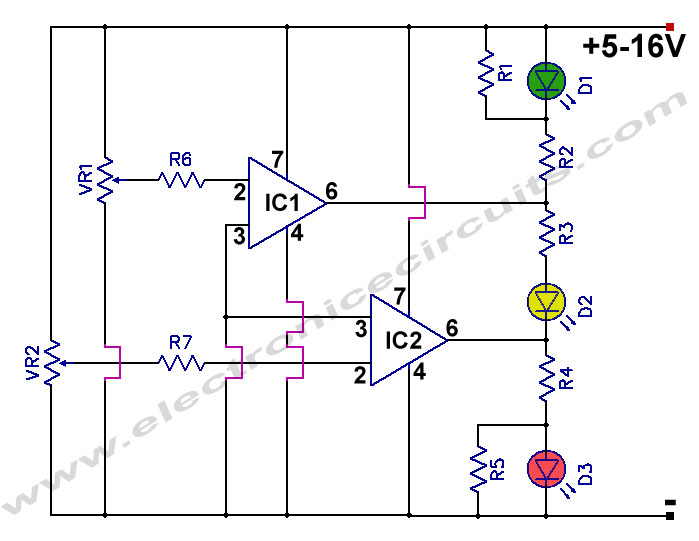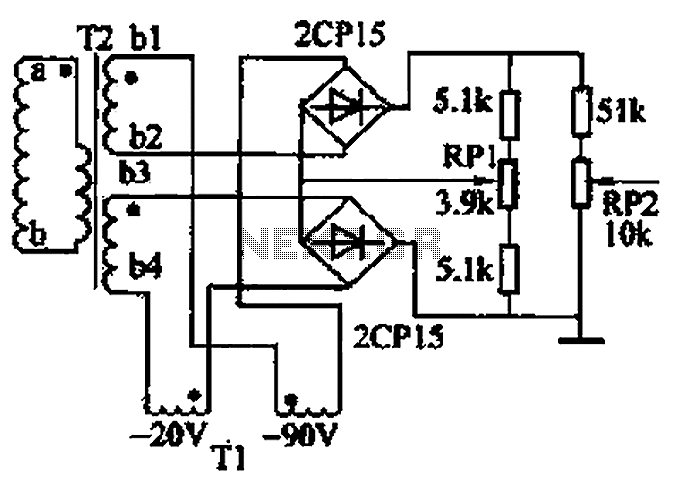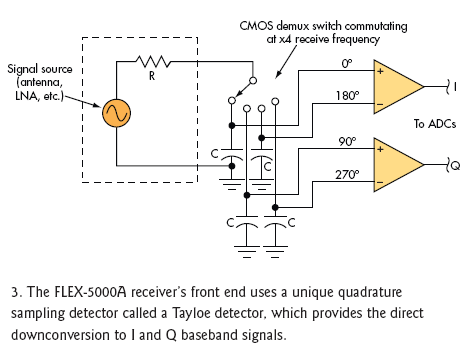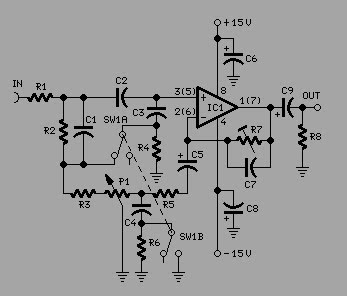
INA105 circuit diagram of the basic power and signal connections
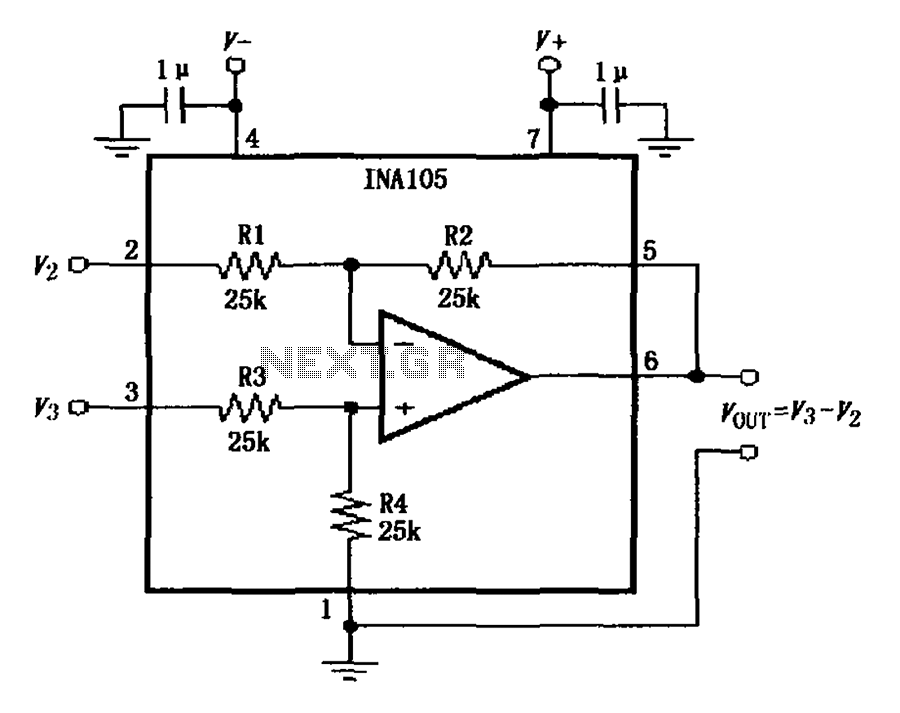
The power supply terminal should utilize a 1 µF chip capacitor filter, positioned as close as possible to the chip's supply pin. The signal is generated by the input pins 2 and 3. The source resistance of the signal should match the input resistor of the INA105 to ensure a high common-mode rejection ratio. A mismatch in the source resistance can lead to a decrease in the common-mode rejection ratio by approximately 80 dB. If there is known source mismatch, an additional resistor in series with the input resistor can help maintain a high common-mode rejection ratio.
The circuit employs a 1 µF chip capacitor filter at the power supply terminal to stabilize the voltage supplied to the INA105 operational amplifier. This capacitor should be placed in close proximity to the chip's supply pins to minimize the effects of parasitic inductance and resistance, which can degrade the performance of the circuit.
The INA105 is a precision instrumentation amplifier designed for applications requiring high accuracy and low noise. The input pins 2 and 3 are used to receive the differential signal, which is crucial for accurate measurements. It is essential that the source resistance of the signal feeding into these pins is equal to the input resistor of the INA105 to achieve optimal common-mode rejection. The common-mode rejection ratio (CMRR) is a critical parameter that defines the amplifier's ability to reject common noise signals that may be present on both input lines.
In scenarios where there is a mismatch in the source resistance, the CMRR can suffer significantly, resulting in an approximate degradation of 80 dB. This decline can severely impact the performance of the circuit, making it crucial to match the source resistance to the input resistor accurately. In cases where the source mismatch is known, implementing a resistor in series with the input resistor can effectively counteract the mismatch and help maintain a high CMRR. This additional resistor should be chosen carefully to ensure it does not introduce excessive noise or offset errors into the system.
Overall, attention to detail in the layout and component selection will enhance the performance of the INA105, ensuring accurate signal amplification in precision applications. As shown, the power supply terminal to use 1 F chip capacitor filter, and should be as close to the chip supply pin placement. Signal produced by 2 feet and 3 feet input, signa l source resistance should be equal INA105 input resistor to ensure a high common-mode rejection ratio. If the signal source resistance 5 mismatch, the common mode rejection ratio to decline by about 80dB.
If you know the source mismatch in series with the input resistor serve to maintain a high common mode rejection ratio effect.
The circuit employs a 1 µF chip capacitor filter at the power supply terminal to stabilize the voltage supplied to the INA105 operational amplifier. This capacitor should be placed in close proximity to the chip's supply pins to minimize the effects of parasitic inductance and resistance, which can degrade the performance of the circuit.
The INA105 is a precision instrumentation amplifier designed for applications requiring high accuracy and low noise. The input pins 2 and 3 are used to receive the differential signal, which is crucial for accurate measurements. It is essential that the source resistance of the signal feeding into these pins is equal to the input resistor of the INA105 to achieve optimal common-mode rejection. The common-mode rejection ratio (CMRR) is a critical parameter that defines the amplifier's ability to reject common noise signals that may be present on both input lines.
In scenarios where there is a mismatch in the source resistance, the CMRR can suffer significantly, resulting in an approximate degradation of 80 dB. This decline can severely impact the performance of the circuit, making it crucial to match the source resistance to the input resistor accurately. In cases where the source mismatch is known, implementing a resistor in series with the input resistor can effectively counteract the mismatch and help maintain a high CMRR. This additional resistor should be chosen carefully to ensure it does not introduce excessive noise or offset errors into the system.
Overall, attention to detail in the layout and component selection will enhance the performance of the INA105, ensuring accurate signal amplification in precision applications. As shown, the power supply terminal to use 1 F chip capacitor filter, and should be as close to the chip supply pin placement. Signal produced by 2 feet and 3 feet input, signa l source resistance should be equal INA105 input resistor to ensure a high common-mode rejection ratio. If the signal source resistance 5 mismatch, the common mode rejection ratio to decline by about 80dB.
If you know the source mismatch in series with the input resistor serve to maintain a high common mode rejection ratio effect.
